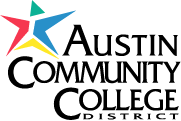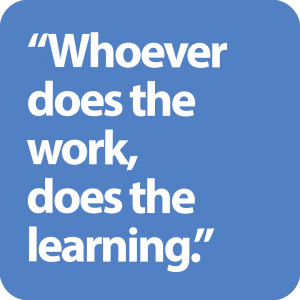[5-minute read] Our 2018-2019 calendar emphasizes developing an understanding & responding to the context of your classroom. We start with an inspirational quote, back it up with research, then provide you with classroom application ideas. Our April 2019 blog post, written by Instructional Designer Shih-Ting Lee, provides examples of active learning techniques.
“Whoever does the work, does the learning” -Terry Doyle, Learner-centered teaching, putting the research on learning into practice.
Student-centered or learner-centered Instruction is about “optimizing the opportunities for our students to learn” (Doyle, 2018). This is important because students in courses with active learning are 1.5 times more likely to succeed, compared to students in a traditional lecture course (Freeman & others, 2013). Research has already identified many effective strategies to create such learning opportunities for students with different cultural background and needs.
A few ways TLED supports active learning:
Training: Apply to Project ACC’s Summer Institute on Active & Engaged Teaching (apply by April 11, 2019)
Resources: Check out ACC’s Teaching & Learning library book collection
Course Materials: Incorporate instructional videos into your course
Inspiration: Get ideas from other ACC instructors in the Faculty Forum Blog
Here are three examples of how you can incorporate active learning into your teaching practice.
Try Think, Pair & Share
A simple idea to get started can be as easy as “Think, Pair & Share.” The idea is to give all students some alone time to reflect on their learning before sharing their ideas with a partner or a small group. This small group sharing is especially helpful for shy, english as a second language, or students with learning needs. After the pair or small group sharing, the instructor can then invite a few groups to share. If time allows, the more the merrier; otherwise, one or two groups will do. This strategy is very effective because it requires students to actively apply several learning strategies at the same time, such as self-reflection, communication or consolidation of new information. I make a habit of introducing this process to my students early on and make the expectation clear that everyone has to participate. I will say the majority of my students enjoy this process and can see the benefit of it.
Try Project Based Learning
The idea is to provide students with authentic projects to apply key knowledge, skills or attitude from the class. A good source of inspiration is this 58-minutes-long documentary, Schools That Change Communities from Library Services. This video can give you solid ideas on how you can turn themes from your course into interdisciplinary studies and provide students with an opportunity to apply them in projects that bring positive outcomes to the community, beyond the walls of the classroom. Of course, you can start small by giving students the opportunity to work on pieces of a big project and gradually pull them together into a bigger project. Scaffolding or instructional support along the way is essential. Make sure you provide students with enough explanation, examples, or supporting materials before setting them free to work on their own.
Try Sustainable Assignments
This idea is closely related to project-based learning. The key premise is to give students assignments that can be used beyond the classroom. Some examples can include study guides that your students compile for future students or multimedia products that they can showcase on their portfolio sites. This blog has a few ideas to help you get started.
If you are interested, the Teaching & Learning Excellence Division (TLED) has resources and staff that you can consult for classroom implementation. Seek them out and give active learning a try!
CRTxACC
To support faculty who are exploring and implementing culturally responsive teaching in their courses, we’ve created a Private Facebook Group to facilitate collegial conversations.
CRTxACC members are encouraged to share resources, experiences, and questions to deepen their understanding of culturally responsive teaching.
References
Terry Doyle, Learner-centered teaching, putting the research on learning into practice., Stylus Publishing, 2018
Freeman, S., Eddy, S.L., McDonough, M., Smith, M.K., Okorafor, N., Jordt, H., and Wenderoth, M.P. (2013) Proceedings of the National Academy of Sciences, vol. 111, no. 23, p. 8410–8415.
Tags: active learning, active teaching, austin community college, blog, culturally responsive teaching, engaged students, faculty, higher education, pair, pedagogy, project-based learning, share, sustainable assignments, teaching strategies, think
Back to Top

